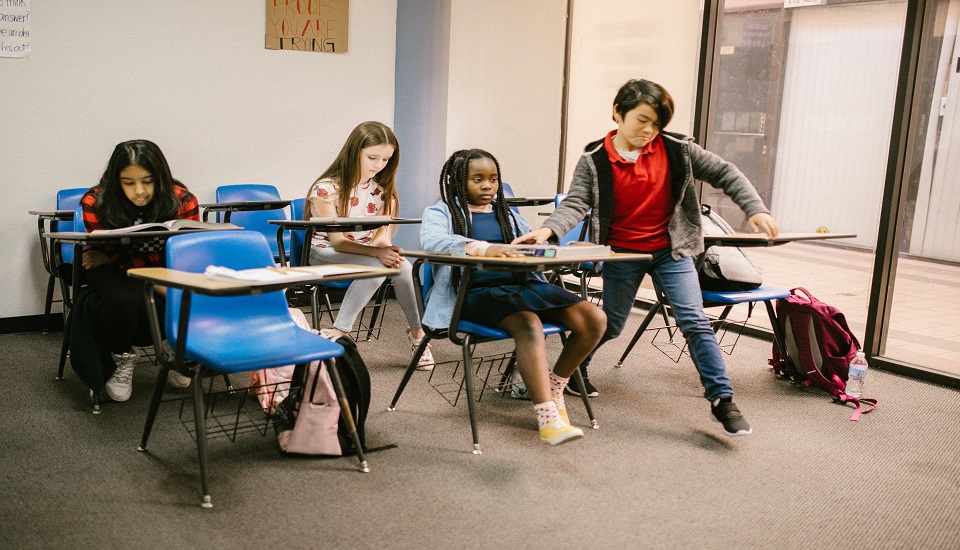Role of Teacher in Handling Passive Aggressive Behaviour in Learners
21st November 2022
As a teaching professional, you must have come across a student who habitually dawdles, has a bad mood, underperforms, tests the spirit of class regulations, and challenges your authority. You see that this particular learner has a way of breaking almost every rule you set, but always in a subtle way and with a possible excuse. Interacting with this student might feel like you are on an emotional roller coaster in your own classroom. If all the boxes tick, there is a good chance that you may be dealing with a passive-aggressive student.
Passive-aggressive behaviour is a kind of deliberate yet covert way of expressing feelings of anger. The complex emotion of passive aggression is stirred by a young individual’s fear of expressing direct anger. The passive-aggressive learner probably is of the belief that life will only get worse if adults came to know of his/her emotion, so s/he expresses anger in an indirect manner. In general, such behaviours are designed to ‘get back’ at an authority figure without that person immediately recognizing the individual’s underlying anger.
So, what role can a teacher play in managing such passive-aggressive behaviour in learners?
Management of Angry and Passive-Aggressive Students
Being an educator certified in counselling courses for teachers, you have the ability to identify anger and aggression and respond to it accordingly. The initial step is to identify the stage of aggression that is being displayed by the learner and what triggers it. This will enable you to chalk out a plan of action to address the problem.
There are four phases of anger.
- The trigger
- The build up
- The outburst
- The aftermath
To aid the learners understand the ways to manage their emotion of anger, first they need to know about the four stages. Encourage them to talk about their feelings and let them identify the stage of anger they’re experiencing themselves.
It can be beneficial for the classroom environment if the students talk about their feelings openly and are able to identify their own stages of anger, especially with young children or students with learning disabilities. You can try and teach them to use a metaphor they are aware of. E.g., that of a volcano or a bull. This can also be presented in the class as a poster, which you can refer to whenever learners are showing the signs of anger.
As a teacher you can also teach your learners the methods they can use to respond to situations or triggers. Working together with your learners, especially at a stage when they’re learning to understand and trying to regulate their emotions, enables them to learn to manage their anger with a constructive process rather than responding with more aggression; or with inactiveness. You can talk them through the below mentioned points and ideally engage them in a discussion.
- Guide your learners to recognise the triggers for the anger
- Aid them to ask questions of the person aggravating them like - what does the person want?
- Encourage them to be a good listener and try to understand the problem
- Guide and show them the ways to try and identify non-violent approaches – being calm in the situation or moving away from it
These can also be presented in a poster form. Your learners will be able to refer to it during requisite times. Main terminologies for expressing their feelings and emotions can be taught from an early age as an integral part of the class. You can encourage your older students to create their own posters; personalising the topic of anger/ passive-aggressiveness whilst emphasizing the use of vocabulary in English.
Passive-aggression
Passive-aggression in learners can be a bit tough to identify, but is quite common and can be extremely frustrating for the teacher and harmful for the classroom environment. if not managed in time, it can lead to a communication breakdown and a corrosion in both teacher-student relationship. To identify passive-aggressive behaviour, it is convenient to carry out a student audit, such as the one demonstrated below.
| NAME AND AGE: | |
| BEHAVIOUR AND SITUATIONAL NOTES: | |
| INCIDENCES (DATE, TIME, FREQUENCY): | |
| FURTHER REFLECTIONS: |
The audit-sheet identifies some key indicators of passive-aggression among learners:
- Usually ‘loses’ things or comes without required things
- ‘Slow motion’ while looking for things, getting in line, getting in place for activities etc.
- Requires regular reminders to stay on-task and needs persistent watching to complete work
- Fails to turn-up the homework – as s/he ‘lost’ the note of what to do or s/he ‘didn’t hear’ what had to be done
- Often are pleasant and amiable, when no demands are made; but in case of a set target or time frame, s/he becomes moody and withdrawn. Instead, s/he will provide an excuse that seemingly points at someone else’s fault.
As stated, these are some typical passive-aggressive indicators, which can ‘manipulate’ and hamper the learning process without being externally aggressive. Once you recognise any of the sign/s of passive-aggression, you can prepare apt approaches or methods of response.
After going through any of the courses for child counselling, you’ll be able to find a strategy to recurring bad behaviour. With this, you can be prepared and respond in a calm and composed manner. Be confident in your approach, avoid becoming angry or passive yourself. With time, learn which of your approaches are effective and focus on those. Be sure to make it clear as in what is acceptable and what isn’t in the classroom. Encourage and reward your learners with positive reinforcements even if the learner doesn’t response externally. Be determined. Responding to passive-aggressive behaviour entails a long-term approach. Don’t feel disheartened. Remember to reward yourself as well your learners. The aim is to make the learning process more effective and pleasant for all including you.
Written By : Ipsita Roy